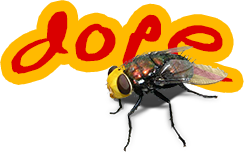Measuring Software
posted under category: Software Quality on February 1, 2020 by Nathan
Why do we want to measure software?
Software measurement is what we software developers do instinctively when we start a new job, join a new project, or enter a new team. It’s critical for us to understand the scope of a product so that we can learn our boundaries and understand our place. Understanding software is one of our best skills - the others being the ability to explain it, and the ability to write it (okay, there may be more to it). Our fight against the chaos of the unknown requires that we split up what we can observe into categories that we can understand.
Many times I’ve been give a legacy codebase without a proper introduction. That’s the worst feeling, and was my motivation for writing a big post on how much documentation you should have. If we could somehow bottle up this knowledge and pass it on to our colleagues, it could be very beneficial to future maintainers, helping to lower the long tail of operational cost on a product, and maybe even stave off the inevitable retirement of an app and the cost of rewriting it for a long time. And that’s our goal - it’s to remove cost, not to add it. It’s to understand the world and to be able to explain it.
Good measurements of software can bring a valuable understanding to us and to the people paying our bills. Is the software tiny and easy? That’s good to know! Is the software humongous and complex? That’s good to know! Is the software terrible and in dire need of help? That’s good to know!
How do we measure software?
Answer that and you’re likely to get a grant. The truth is, software isn’t specifically measurable, for the same way we can’t make software perfect. Sure, at a certain small size we can verify that it works as expected, but, you know, can it read mail yet?
Every program attempts to expand until it can read mail. Those programs which cannot so expand are replaced by ones which can.
Zawinski’s Law
That’s tongue in cheek. These days we could change Zawinski’s Law to interacting with social media or running as a native mobile app.
Our trouble with measuring software is that measuring by any single logical metric is a sure way to miss the mark altogether. Software measurement has to be on a different level, in fact, many different levels. Measuring software can only be done when we take in a system holistically. That means understanding it on a much broader level.
As soon as we measure the size on disk, somebody’s in there changing things. As soon as we measure the memory footprint, someone logs in, adding data. As soon as we measure the performance, another proces ties up the CPU and throws off our measurements. Software is soft, and changes too frequently to make accurate measurements that matter. Software is fluid, moving from disk to RAM, and transmitting across networks. It doesn’t take much of a program to utilize all of the hardware given it. It seems that simple metrics just won’t be enough to measure software. Measuring software by its metrics can give a picture of the whole, though, and there’s value in that.
When thinking holistically, one of the aspects that would need to be measured is the quality of a work. We need to measure the quality to complete this picture.
How can we measure software quality?
There are more intangible ways of measuring software, such as number of customer requirements, size or activity of the product’s backlog, and number of users. In particular, we can concentrate on the number of logged defects, if they have been logged at all. None of these are a holistic measurement of the quality of a piece of software, but they do help to paint the broad picture.
I believe that quality is a collection of mostly-intangible aspects. This means quality cannot be measured with a number or a picture. I think maybe a dozen pictures and user interviews and developer deep dives could help complete a mental model of the quality of an application.
There are quality metrics, such as the amount of code coverage (amount of code that is covered in unt tests). That’s a potential measurement of quality, but it could still be a terribly built app with great unit tests. Cyclomatic complexity is one of my favorites, having built a McCabe Indexing tool of my own a few years back. It tells you how complex your CFML files and functions are, and can show line-by-line where your most complex areas are. Another one I’ve looked at is function point analysis, which can map the central parts of an application by usage.
Once a software analyst understands the system holistically, they should be able to express that holistic idea to others. Of course this is a breakdown of its own type, and relies on the communication skills of the analyst.
What are the aspects of software quality?
I’ve compiled this list that I’ll go over at a later date, but feel free to suggest more. Quality is:
- Completeness
- Conciseness
- Consistency
- Debugability
- Efficiency
- Extensibility
- Maintainability
- Client Portability
- Server Portability
- Reliability
- Security
- Structuredness
- Testability
- Understandability
- Usability
